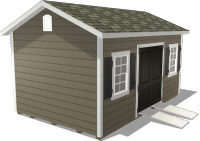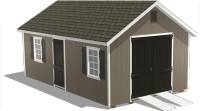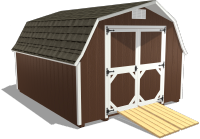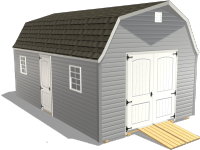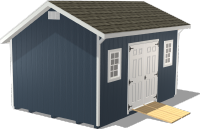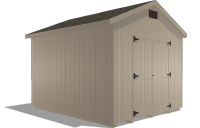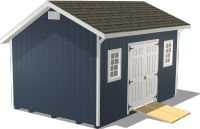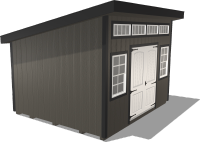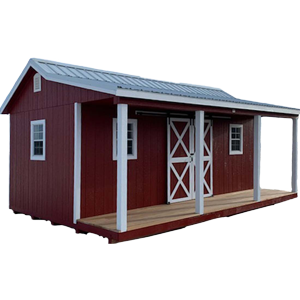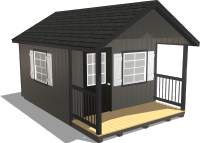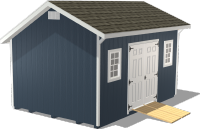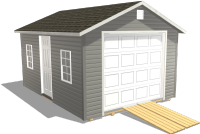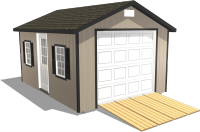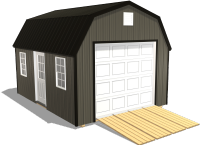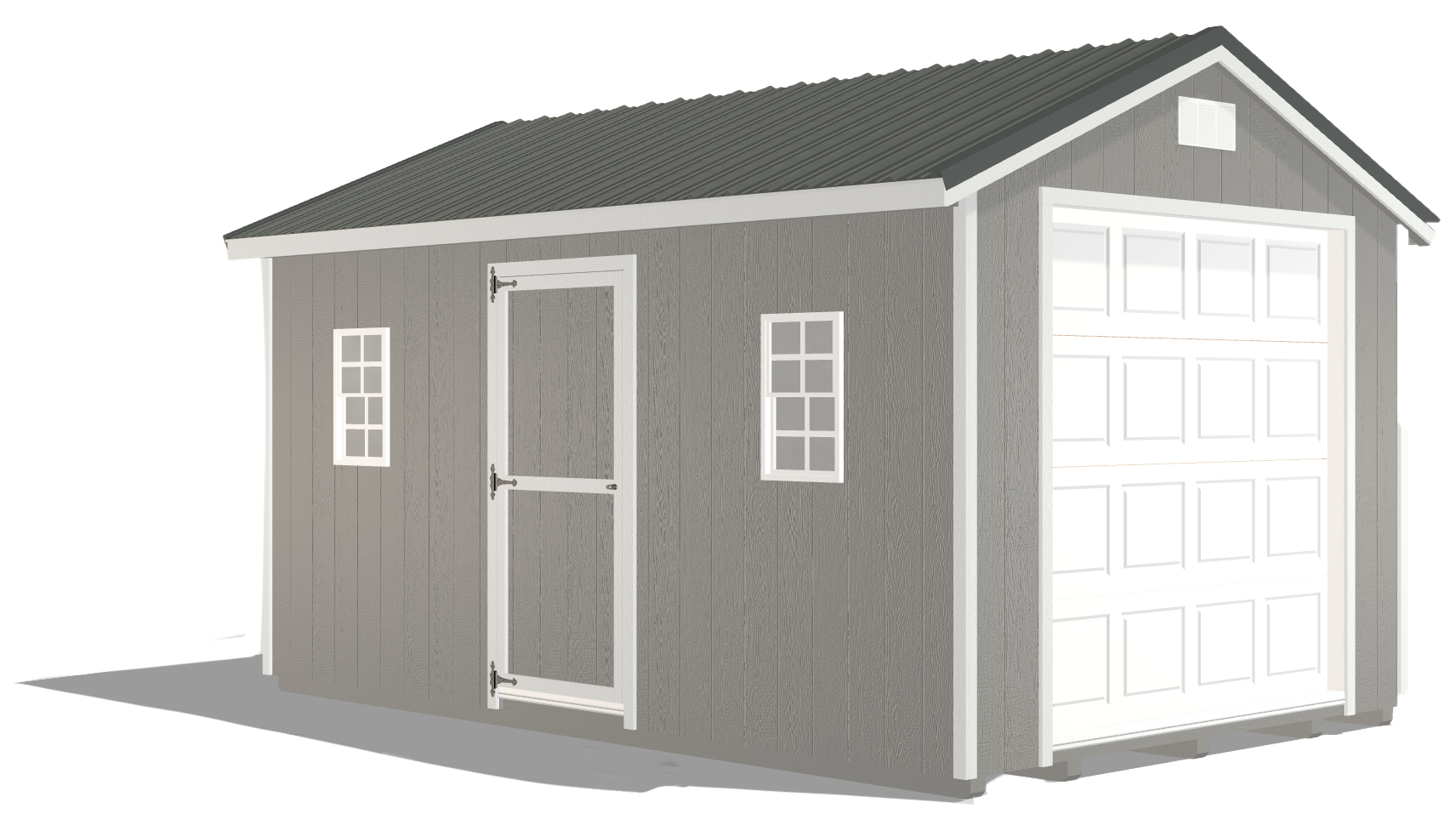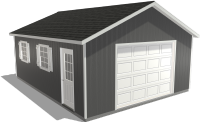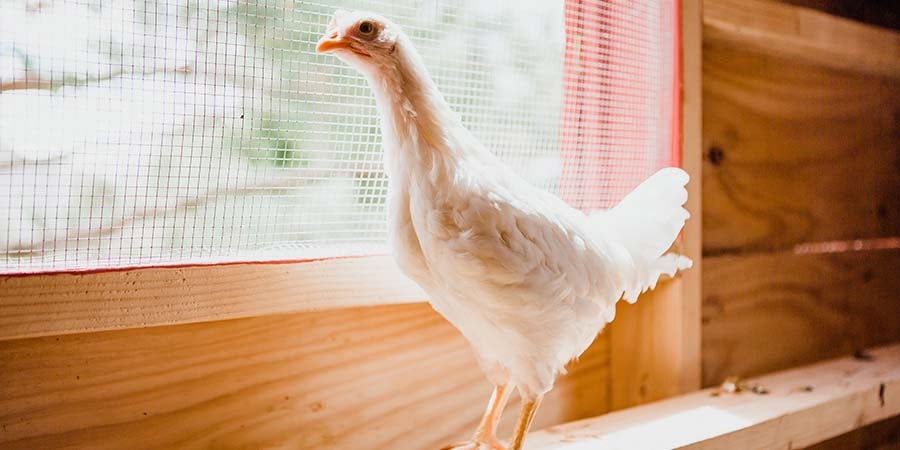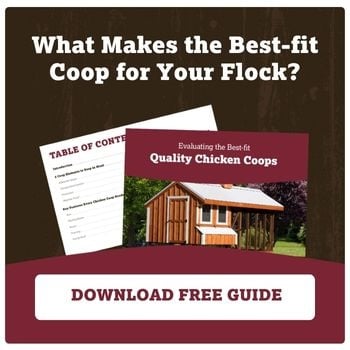Which Type of Backyard Chicken Coop is Right for You?
by Dakota Storage Buildings, on September 22, 2021
To narrow down the best coop for your chickens, read this summary of the most popular options.
Chicken coops come in all shapes and sizes and are made from a wide variety of materials. Some of the most popular options for chicken coops include plastic chicken coops, DIY chicken coops, enclosed chicken coops, free-range chicken coops, traditional chicken houses, poultry sheds, and portable coops. Below is a brief description of each option.
1. Free-Range Plastic Chicken Coops
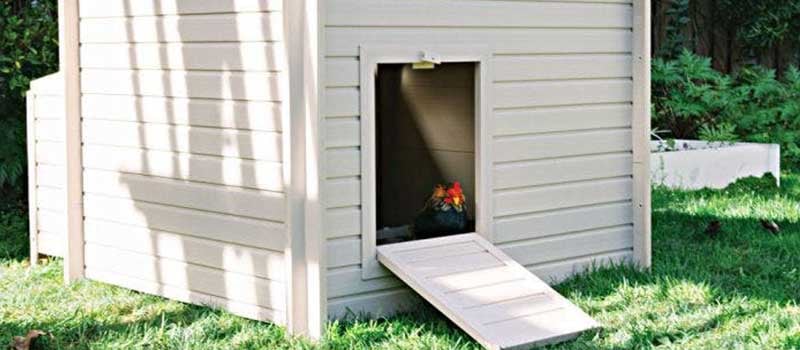
Image Source: Gardener's Edge
This type of coop is constructed from heavy-duty but lightweight plastic making them durable but easy to move or relocate. Most plastic coops have UV-blocking pigments that prevent degradation and cracking. A plastic chicken coop can last for years with minimal maintenance. The nonporous surface of plastic makes coops impervious to pathogens. And cleaning is a breeze. Quickly wipe away bacteria with warm water, soap or bleach, and a soft brush or sponge. For a deep clean, a power spray using detergent and a sanitizer will remove dirt, grime, and chicken poop. Most come without an attached run, so a yard fence or a gated area should be considered for the chicken’s safety.
Highlights:
- Made of heavy-duty but lightweight plastic
- Utilizes UV blocking pigments that prevent degradation and cracking
- Has a nonporous surface that’s impervious to pathogens
- Easy to clean
2. Free-Range Wooden Chicken Coops
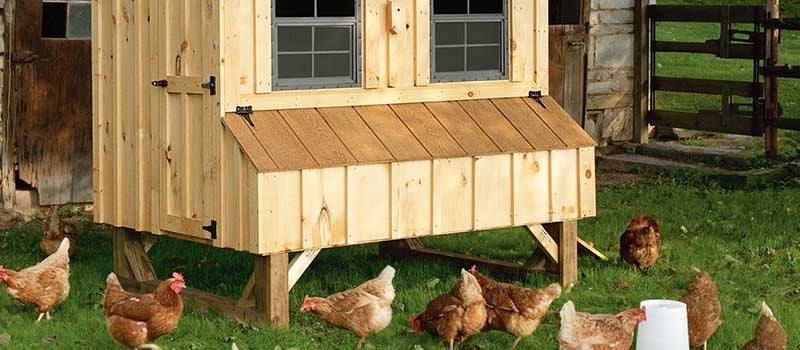
Chickens cooped up in a small space can get bored, leading to destructive behavior toward other chickens. But free-range chickens that are free to forage, dig for bugs, exercise, and soak up the sun, stay active and healthy. When your chickens aren’t roaming around during the day, they need a place that will keep them safe from predators and cold temperatures. Like the enclosed chicken coop mentioned above, most free-range coops are also made of treated wood, and many have built-in roots and nesting boxes. The key difference between the two is the run — this option doesn’t include an attached run. In which case, you’ll need to decide how you’ll keep your chickens safe from predators when you’re not around to protect them.
Highlights:
- Not fenced in so chickens can roam freely
- Chickens are not limited to a limited foraging space
- Are durable and known to last a long time
- Often come with built-in roost and nesting boxes
3. Enclosed Wooden Chicken Coops
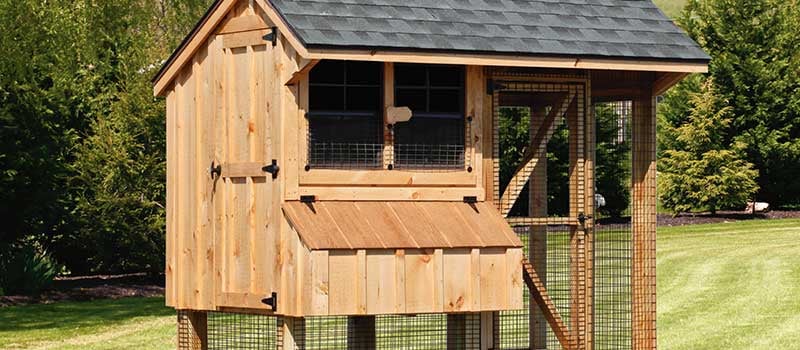
Providing a complete haven — coop and run combined — for your flock keeps them protected from bad weather and potential predators. Due to their immobility and docile nature, chickens serve as easy prey for foxes, raccoons, opossums, and hawks. These coop types are most often made of treated wood and come in a range of sizes so you can choose the right size for your flock. Along with a built-in run, these often come with a built-in roost and nesting boxes. These are on the more expensive side of our coop types but are durable and last a long time.
Highlights:
- A combined coop and run offers 24/7 protection from predators
- Gives chickens a safe place to be during storms and cold weather
- Are durable and known to last a long time
- Often come with built-in roost and nesting boxes
4. Enclosed Portable Wooden Chicken Coops
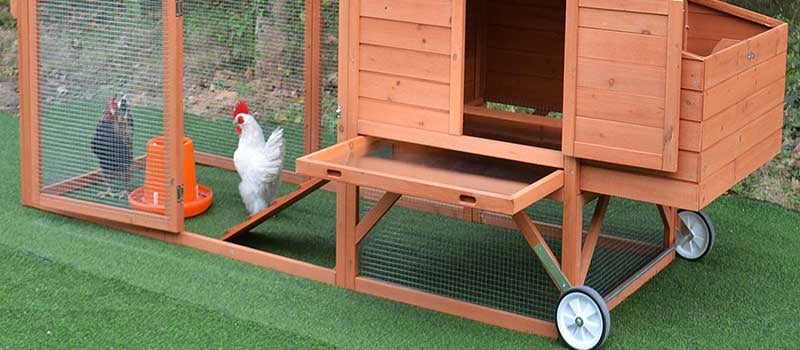
Image Source: Amazon
Most portable coops on the market are made of treated wood and have wheels to facilitate easy movement. Because of their mobility, the coop and run can be moved around to different areas. Reasons to move a coop include preventing parasite infestation (this thwarts their lifetime cycle), relocating to cooler or shadier space, or moving the coop to a fresh patch of soil for dust baths and foraging. Because they’re light enough to move, some coops are made with lighter material that’s lower in quality. And while portable coops aren’t ideal for long-term living due to the small space, they are great short-term or temporary solutions.
Highlights:
- Have wheels that facilitate easy movement
- Great short-term or temporary enclosed coop solution
2. DIY Chicken Coops
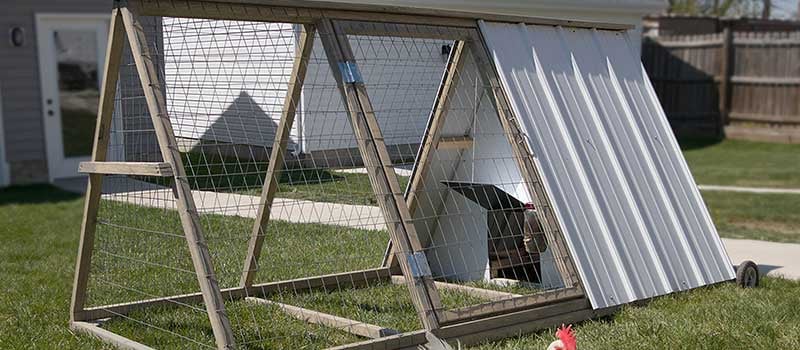
Image Source: Bouncingrobbit
For DIY coops, you can buy a kit that requires assembly, or you can find design plans online to build one from scratch. While kits are DIY, there is less wiggle room with design than building a coop from scratch. However, in both cases, DIY chicken coops typically cost about half of what you'd expect to spend on a ready-made, prefabricated, or custom coop. If you build a coop from scratch, the price can vary based on whether you use new or recycled material. Besides the generally lower price point, another benefit to building a coop yourself is that you can tailor it however you'd like, constructing it to fit your style and preferences. In both cases, you’ll need to consider if you want a fenced-in or a gated area around the coop to protect your chickens from predators.
Highlights:
- Kit: Easy to follow directions
- From Scratch: Can be fully customized and build with new or recycled materials
- Both: Requires assembly which means tools and skill is needed
- Both: Can be done very cheaply
6. Chicken Houses
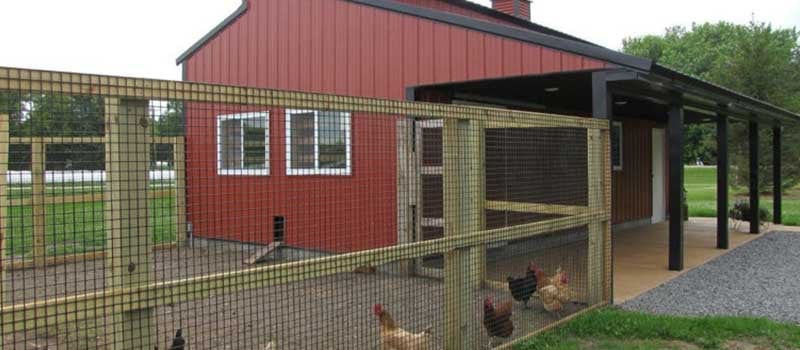
Image Source: Delaney Chicken
The traditional chicken house is based on a design created by Tarter Farm and Ranch Equipment that dates back to 1895. This design consists of a large wooden structure (like a barn or shed) with a door that provides access to a fenced-in chicken run. While you can buy options similar to this, it makes more sense to build it if you already have a shed or building on your property that you can convert to or use as a chicken house. The biggest job would be adding an attached run and a chicken door. Once you add an interior roost and create a space for nesting, and you’re set.
Highlights:
- Utilized a building already on your property
- Ideal for larger flocks of chickens
- Requires building skills and tools
7. Poultry Sheds
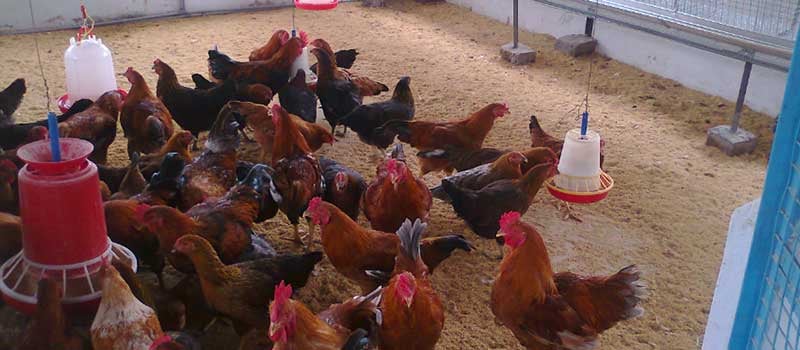
Image Source: Delaney Chicken
The poultry shed is a basic design usually used on farms. It’s an enclosed building with several roosts, nesting boxes, feeders, and waterers and often has a separate area for supply storage. The shed has a sloping roof and several windows to provide natural sunlight and fresh air. Some keep the chickens inside 24/7, while others choose to give the birds access to the outdoors by adding a fence to one side of the building along with a chicken door or keep a full-size door open into the enclosed area.
Highlights:
- Utilized a building already on your property
- Ideal for farms with larger flocks of chickens
- Requires building skills and tools
- A fenced-in run can be added but not necessary
Conclusion
The type of coop you choose for your chickens is entirely up to you. If you have a great deal of outdoor space and no threat of predators, you can let your chickens range freely while providing them access to either a plastic or wooden coop for resting and egg laying. If predators are a problem or city ordinances prevent you from allowing your chickens to freely range, an enclosed setup would be better.
Backyard chickens have become increasingly popular over the last few years for many reasons. There's a lot of chicken-raising information out there and many types of coops to choose from, which make things feel overwhelming. Our guide, Evaluating Chicken Coops: Finding the Best-fit for Your Flock, addresses what chickens need to be healthy and happy, the key features we believe every coop should have, and insight into the coops that we recommend.



